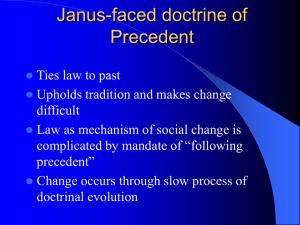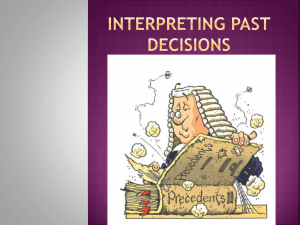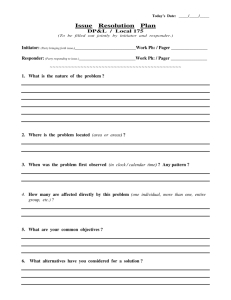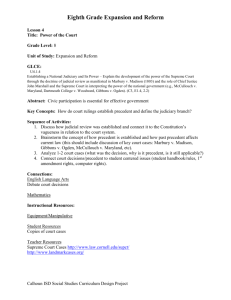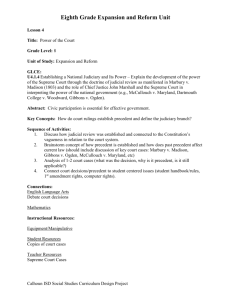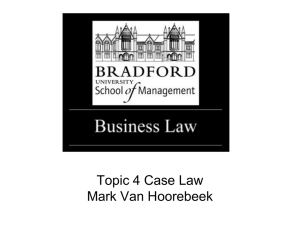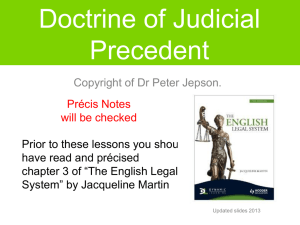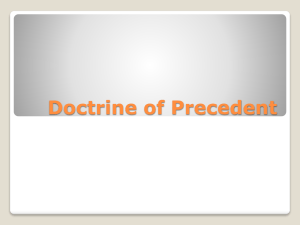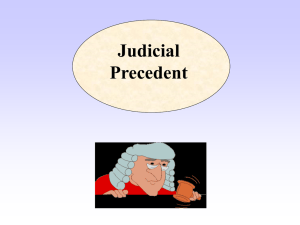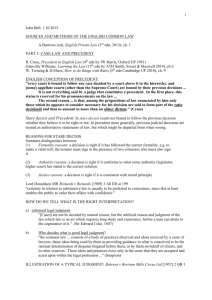Judicial Precedent
advertisement
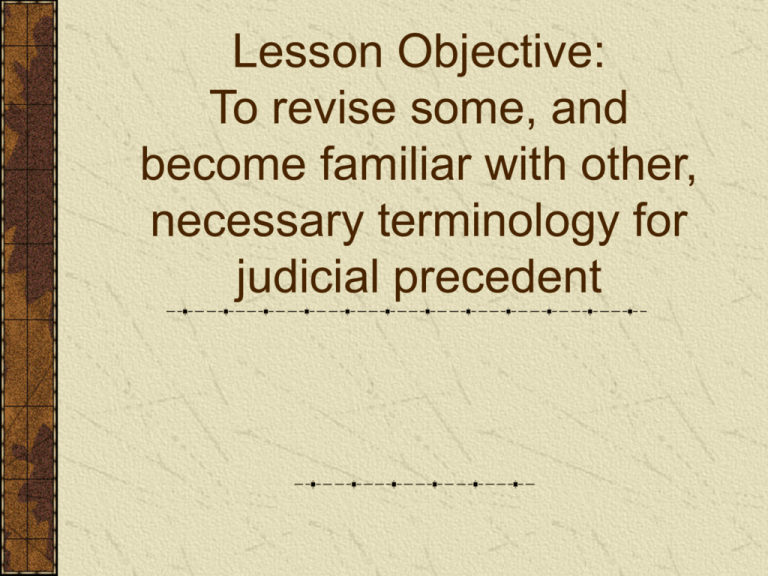
Lesson Objective: To revise some, and become familiar with other, necessary terminology for judicial precedent What is judicial precedent? Judicial precedent is the system whereby judges create laws for future judges to follow What is stare decisis in full and what does it mean? Stare decisis et non quieta movere: stand by what has been decided and do not unsettle the established It exists to provide fairness and certainty in the law What does a judgment contain? The judgment is a speech made by the judge giving: A summary of the facts A review of the legal arguments The reason(s) for the decision: the principles of law used The decision itself What does ratio decidendi mean? Reason for the decision: ratio for short Sir Rupert Cross: Any rule expressly or impliedly treated by the judge as a necessary step in reaching his conclusion It is the ratio that creates/is the precedent for judges in the future to follow What does obiter dictum (pl. obiter dicta) mean? Other things said/things said by the way: obiter for short Two examples are: 1. Speculation – Howe: duress is no defence to attempted murder (as well as murder, which was the actual decision in the case) 2. Hypothetical situations – Hill v Baxter: examples of automatism How does an obiter differ from a ratio? It does not form binding precedent But the ratio does form binding precedent. Therefore it is important to separate one from the other However, the judge delivers the judgment in continuous prose, which makes this difficult How many judges in a court of first instance? One How many in an appellate court? Divisional Court - 3 Court of Appeal - 3 or 5 House of Lords - 5 or 7 or even 9 Why does this pose a problem for lawyers? The more judges, the more potential judgments – so the ratio is even more difficult to find In appellate courts a majority verdict is acceptable – so then there will be a dissenting judgment – or even more than one. That makes the ratio still more difficult to find What is original precedent? A point in an area of law that has never been decided before, so there are no past cases on which the judge can base their decision What does the judge then do? The judge looks at cases which are the closest in principle and if they are close enough uses similar rules This is reasoning by analogy How are the two views of what a judge does described? 1. Judges do not create law: they merely declare what it has always been 2. Law changes over time so a judge really does have a law-making role Hunter v Canary Wharf (1995) With what was the interference with TV broadcasts said to be analagous? Prospect, i.e. view from a house (Aldred’s Case (1611)) On your worksheet/in your notes you should have shown how similar/different prospect and TV reception are Did Hunter et al win? No. The analogy was good (Pill LJ), and as there is no action for loss of prospect then neither should there be for loss of TV reception What is a binding precedent? A precedent from an earlier case which must be followed Even if the judge in the later case does not agree with it But the facts in the later case must be sufficiently similar to those in the earlier case And the earlier case must have been decided by a court which was senior/superior to or possibly at the same level as the later court What is persuasive precedent? Precedent that is not binding Five sources with examples from criminal law: Courts lower in the hierarchy: R v R Decisions by the PC: Thabo Meli Statements obiter: Howe -> Gotts Dissenting judgements Decisions from other countries: US v Kirby; Re S How might a precedent NOT be followed? Distinguishing – if the facts of the later case are sufficiently different from those of the earlier one. Merritt v Merritt was distinguished from Balfour v Balfour Overruling – if the court feels the legal rule in an earlier case is wrong. Shivpuri overruled Anderton v Ryan Reversing – if on appeal a higher court feels that a lower court has made the wrong decision; this is in the same case of course
